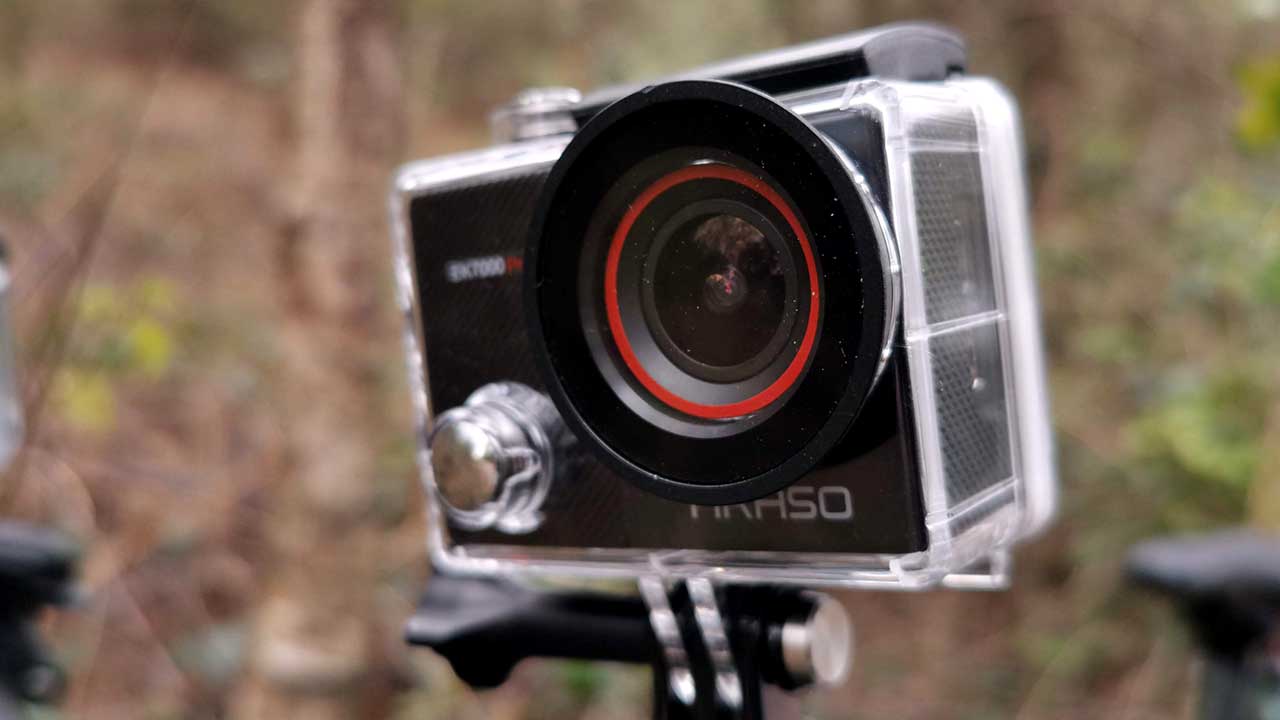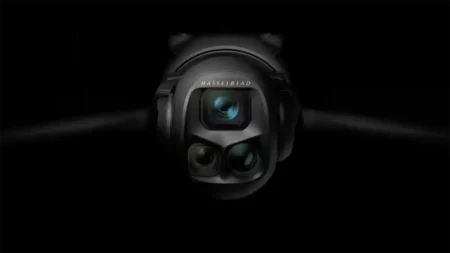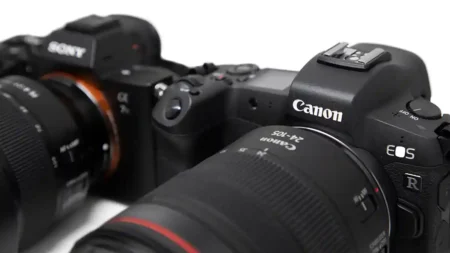Snap Verdict
AKASO has form when it comes to well-priced and spec’d action cameras; 4K video, touch screen, all impressive stuff, especially when you consider it costs less than £100/$100.
It’s styled in the traditional GoPro Hero form factor and as such fits the majority of generic GoPro accessories, which makes things easy.
This case is where the first major issue with this camera arrises. This camera is touch screen so why cage it in a case where it can’t be used.
Video quality is mid-range, it struggles with low to medium light conditions but in bright sunlight, you get a pretty decent image especially at 4K. It has Image stabilisation but it’s best avoided in this case.
The AKASO EK7000 Pro is an action camera for good all-round family fun, the quality is OK but there are other cameras out there for £100 that have far better quality.
Introduction
There are plenty of cameras out at the moment sporting 4K video, and to be honest for the most part the 4K quality is good.
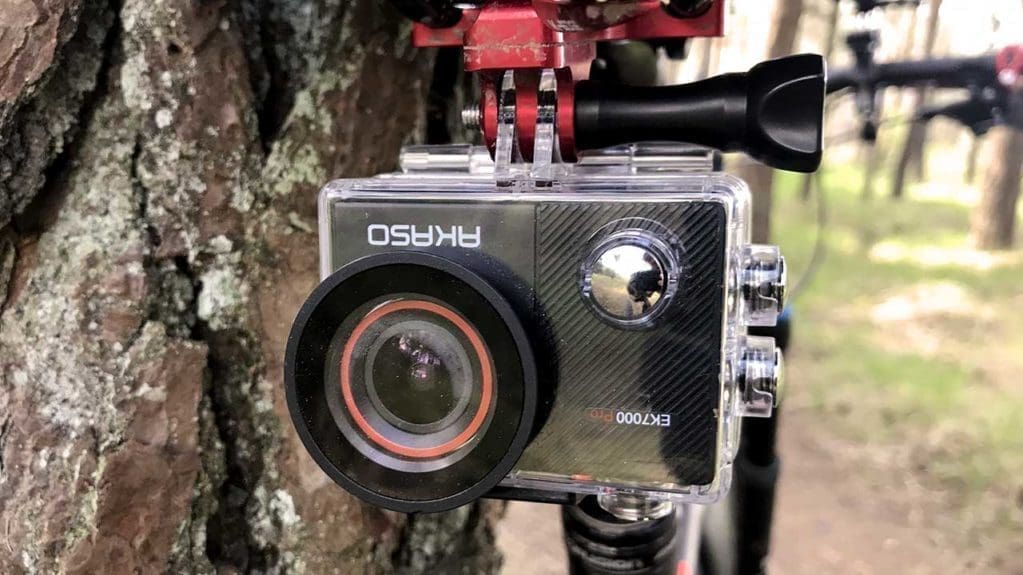
However, the odd thing with these ultra high-resolution action cameras is that the quality of the 1080p footage seems to suffer especially in low light, so will the EK7000 suffer from the same issues?
The AKASO EK7000 Pro has 4K video, a touch screen and Electronic Image Stabilisation which are three big features. While 4K and EIS have slowly been filtering down to these entry-level cameras, a touch screen is something I’ve only seen feature on a couple.
Checking through the Spec’s list and it all looks in order, as with many entry-level cameras there’s a good selection of accessories to get you started in the box, and the overall build quality seems good enough.
There are definitely elements of the camera that have been well thought out, but then there are design conflicts such as the housing and touch screen, it does seem like a camera designed to boast the features yet meet a budget.
//Features
The EK7000 Pro is the update to the EK7000 and features 4K video at 25fps, 2.7k at 30fps and 1080p at 60fps.
As well as video the camera also has the ability to shoot stills at 16mp.
One of the features that really sets this camera off is the large 2-inch ultra clear IPS colour touch screen. This enables you to easily compose your shots and the touchscreen make navigation and setting control fast and intuitive.
One of the big features for any action camera this year is electronic image stabilisation (EIS), it’s a must-have after the success of GoPro’s HyperSmooth.
The new waterproof housing is an upgrade over the previous generation and is waterproof up to 131 feet.
Another nice feature and an essential if you’re thinking about using this camera for a bit of on the go vlogging is the adjustable view angle. This can be set between super wide, wide, medium and narrow.
Finally size and weight wise it’s directly comparable with GoPro measuring in at 6 x 4 x 3.3cm and weighing in at 115g.
In the box along with the camera are a selection of accessories and a spare battery which is a nice touch.
Build quality and handling
Releasing the camera from the housing and the quality seems middle of the road. Solid enough but relatively lightweight. The camera is well designed and the company has made the most of the aesthetics with textures being used to help cover the lightweight plastic.
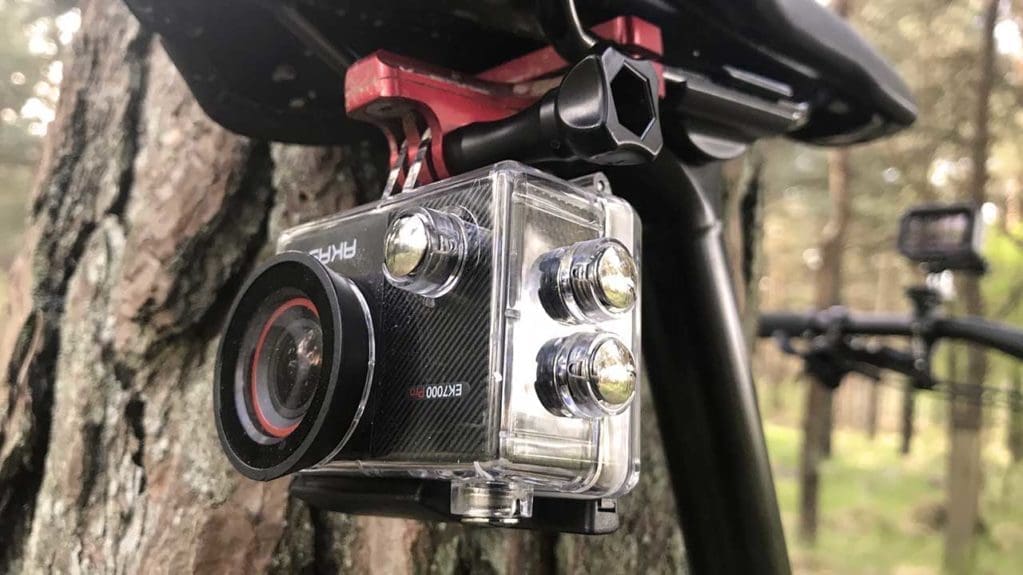
Some of the refinements such as a latched battery door are emitted from this camera and under scrutiny it does seem a little cheap, but then this is sub £100.
Overall the design of the camera itself is pretty good, the designers really have made the most of the materials available to them. You can feel it’s a bit on the cheap side but the aesthetic design makes up for it.
Where quality matters is in the lens and screen at the back, and this is where the cost of manufacture seems to have gone.
Starting with the lens and there’s no information on the site as to the construction, but looking at the quality of the footage it’s obvious that it’s of fair quality.
The screen on the back is a marvel, bright, clear and perfect for an action camera of this size. To have a screen on the back of a camera at this price is unusual.
Pop the camera into the case and it all locks down nice and tight. There’re two rubber strips across the back door to help stop and vibrations which is good.
The space around where the lens sits into the case is just plastic with no rubber padding so we could hear some vibration. However, the fit is nice and tight, so it should be rattle free.
Old style waterproof housing restricts usability
Two big positives for the case are that it has a flat lens, so nice and easy to clean if it gets dirty, and a single release lever lock on top. No fiddly secondary lock to get in the way, which I like.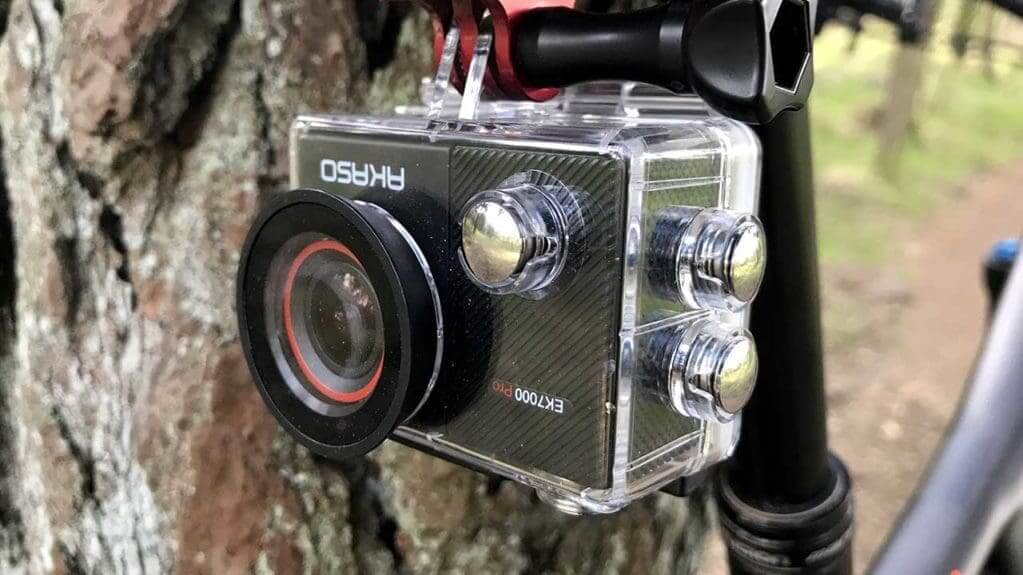
On to the bad points and this case features the old style spring loaded metal buttons. Ok in dusty locations but get them covered in mud and they stop working.
They’re also difficult to use with gloves on and in cold ungloved conditions they’re a great way to cause your fingers an injury.
In use, the handling is solid inside the waterproof housing – the small metal buttons on the exterior of the casework, but they’re an effort use, especially knowing that there’s that fast and responsive touch screen hidden behind the protective shield.
The menu system is easy enough to navigate, but you do it with a sigh knowing how much better the experience could have been it a better-designed case.
One up for the case is that it utilises the standard GoPro mounts on the base. That means that it will fit almost any standard GoPro mount out there and means it’s quick and easy to fit in a few seconds.
In place, you then have to push hard on the shutter button to get it to start recording then make sure your forcing of the button hasn’t shifted the composition, which it inevitably will have done.
Changing options through the housing buttons is a pain especially when attached to the bike, so it’s easier to pop the camera back out, adjust the settings on the touch screen, hit record and pop it back in the case.
Used as an action camera it’s easier to set it up, power on and then use a smartphone to operate the camera. To be honest, in the field you generally set the camera to 1080p 60fps and leave it.
As an action camera the EK7000 Pro has so much potential, but not inside that case. It’s from another era and this is something that AKOSO needs to address.
Out of the case and being used on a selfie stick the camera transforms, the touchscreen is excellent, fast and responsive and even reviewing the footage the screen is clear and bright.
Navigating settings is equally easy and straight forward with a familiar interface that is similar to Yi and other cameras.
The handling is a tale of two. Like a traditional action camera, the waterproof housing is dated and a leftover from older designs. It restricts the camera use and features.
Out of the case and into the cage the camera is an altogether far more attractive option. It’s well designed, if slightly cheap plastic, but works well and the interface and operation is simple and straight forward.
Performance
The camera had already shown it had a split personality with the excellent touch screen and oldskool waterproof housing but there be a similar split between the 4K and 1080p footage.
I’ve tested a few cameras recently where the 4K footage has been excellent, only to check the 1080p video and found that it lacked colour, contrast and detail.
Here the footage from the EK7000 Pro looked to follow the same slightly disappointing trend that I’ve seen recently.
The 4K is good quality, but the max framerate of 25fps means that it’s only suitable for scene setting or vlogging.
Drop the resolution down to 1080p 60fps and it’s OK, there’s detail but you can see the lack of tone, colour and contrast, and this is repeated at 30fps.
Vignette and chromatic aberration are all well controlled but in truth, I was looking for something more from the camera.
Riding through the forest where the light level change quickly and you can really see the camera struggle with blocky visuals as the camera struggles to keep up.
This video output is no worse than many cameras that are coming through at the moment at this price range. They’re able to meet the resolutions and framerates as long as the subjects or scenery they’re filming don’t move and there’s a good amount of light.
Compare the footage against that shot on the GoPro Hero7 Black, admittedly a far more expensive camera, and you can really see the difference.
A big feature of the camera is the image stabilisation, switching this on and you can see the difference but there are some very strange effects. After reviewing the footage I found that it was best left alone.
The App is simple but works well enabling you to connect to the camera, adjust a few settings and remotely control the recording.
Verdict
At around £80/$80 the AKASO EK7000 Pro is not an expensive camera and for the price, it offers a lot of features. However, offering and actually providing are two very different things.
Firstly price wise it’s about £30/$30 too expensive for what you get, yes it has a touch screen but that equates to nothing if the quality of the video isn’t there.
To get decent footage you need a clear, bright sunny day otherwise it’s all a bit mediocre. Even when there is bright sunlight adds a bit of motion and the sensor and processor struggle to keep up.
There are several points about the camera which are a little confusing. Why offer such as good touch screen display if the camera can’t actually capture the quality footage you’re previewing.
Why stick it inside an old style case so you can’t actually use the touchscreen and why provide image stabilisation that just does something peculiar to your footage rather than just stabilise.
If you find the AKASO EK7000 Pro for £50/$50 then it may be worth buying, but as an action camera it just can’t keep up with the action.
For families and people just wanting a small camera to shoot some video, it does pretty well as long as there’s plenty of light.
For more details check out the AKASO website
